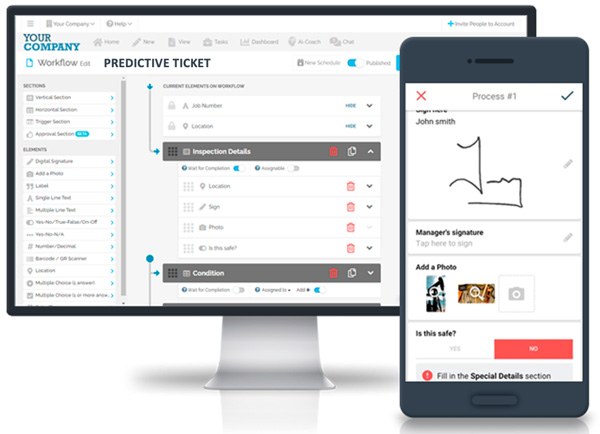As the digital revolution continues to transform the industrial landscape, connected worker technologies are becoming increasingly crucial. These technologies, when designed with the user in mind, can significantly enhance productivity, safety, and operational efficiency. One such solution that embodies this user-centered approach is FAT FINGER, a digital workflow procedure builder that empowers front-line teams to perform their tasks correctly every time.
Understanding User-Centered Design

In conclusion, User-centered design (UCD) is a design philosophy that prioritizes the user’s needs and preferences throughout the design process. It involves a deep understanding of the user, followed by designing solutions that are easy to use, efficient, and enjoyable. It is particularly crucial in the context of connected worker technologies, where the user experience can directly impact the adoption and effectiveness of the technology.
In UCD, the first step usually involves a deep and detailed understanding of the user. This could encompass various factors depending on the product or service being designed. For example, it may involve understanding the user’s lifestyle, their daily routines, their abilities or disabilities, their cultural backgrounds, their motivations and goals, or their technological proficiency, among other things.
The relevance of UCD is particularly highlighted in the context of connected worker technologies. These technologies, which include things like wearable devices, mobile applications, and other digital tools, are becoming increasingly commonplace in many industries. However, their success and effectiveness are heavily dependent on the user experience they provide.
For example, if a connected worker technology is difficult to use, or if it doesn’t adequately cater to the user’s needs, it is less likely to be adopted by workers. On the other hand, a well-designed connected worker technology that is easy to use and meets the user’s needs can significantly enhance productivity and efficiency. Therefore, in the context of connected worker technologies, UCD is not just a nice-to-have, but a necessity.
The Importance of User-Centered Design in Connected Worker Technologies

Connected worker technologies, such as FAT FINGER, are designed to streamline operations, improve safety, and enhance productivity. However, their success largely depends on their adoption by the workforce. Here’s why UCD is crucial:
- Enhanced Adoption: When technologies are intuitive and easy to use, workers are more likely to adopt them.
- Increased Productivity: User-friendly interfaces and workflows can reduce the learning curve and increase efficiency.
- Improved Safety: By designing systems that are easy to understand, the risk of errors and accidents can be minimized.
FAT FINGER: Created With The Connected Worker In Mind

FAT FINGER is a platform designed specifically to cater to the needs of the connected worker. It is a robust application that facilitates streamlined communication and collaboration, making it a powerful tool for today’s connected workforce.
It allows team members to communicate, share information, and work together in real-time, regardless of their location. This creates a more cohesive and efficient work environment, especially for teams that are spread out geographically.
It’s built with a user-friendly interface that requires no technical expertise, making it accessible to all workers, irrespective of their tech-savviness. This feature ensures seamless integration into any workforce, promoting productivity and efficiency.
The platform also provides a suite of tools tailored to the needs of the connected worker, such as task management, real-time updates, and digital checklists. These features enable workers to stay on top of their tasks, collaborate effectively, and ensure that no detail is missed, leading to improved overall performance.
In addition, FAT FINGER prioritizes data security, ensuring that all communication and information shared on the platform is secure. This is particularly important in today’s digital age where data breaches are a constant threat.
Conclusion: The Power of User-Centered Design
In conclusion, User-centered design is a powerful approach that can significantly enhance the adoption and effectiveness of connected worker technologies. By focusing on the user’s needs and preferences, solutions like FAT FINGER can deliver significant benefits in terms of productivity, safety, and operational efficiency.
Experience the power of User-centered design with FAT FINGER. Sign up today or request a demo to see how our solution can transform your operations.


